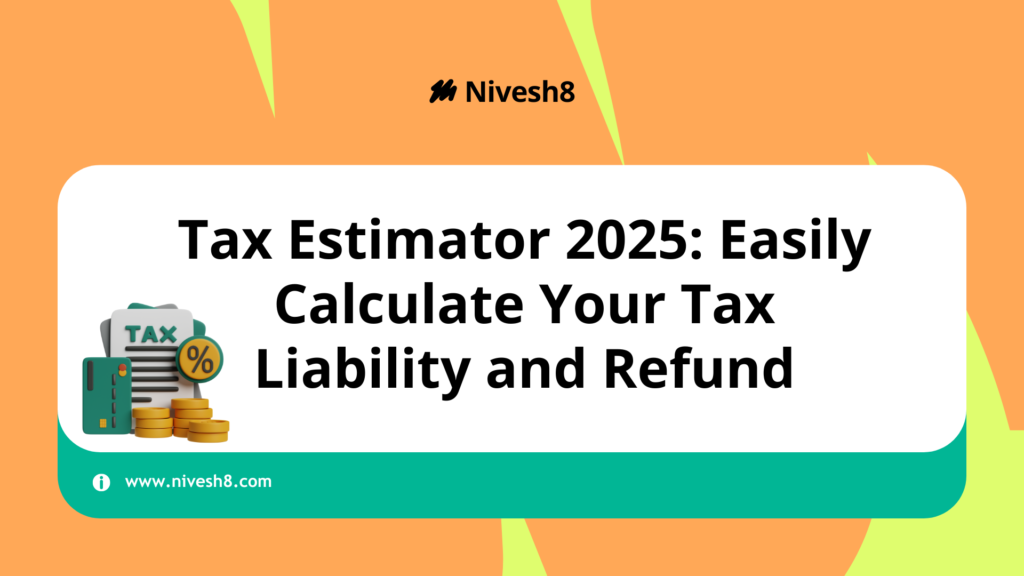Filing taxes can be confusing, especially if you are not sure of your owing amount or whether you qualify for a refund. Given your income, deductions, and tax slab, a tax estimator 2025 lets you quickly determine your tax liability. Whether your position is salaried, freelancer, business owner, or salaried person, using a tax estimator guarantees accurate tax planning and helps to help to avoid last-minute shocks.
Characterize a Tax Estimator 2025
An online tool called a tax estimator 2025 calculates your expected tax liability using your total annual income—salary, business, rental, or capital gains.
- Including 80C, 80D, 24B, HRA, etc., relevant tax deductions
- Advance Tax Paid Comparatively to TDS, Tax Deducted From Source
- Specific tax code (old against new tax code)
This tool provides a basic tax computation, which directs your investment modification, financial planning, and accurate tax filing.
Utilising a Tax Estimator 2025
Initially: Let me enter your income information.
List every source of your income:
- Income (per Form 16)
- Working for yourself or business income
- Real estate’s rental income
- Real estate, mutual funds, or stocks—capital gains
- Interest paid on fixed deposits or savings accounts
Second: Choose Your Tax Method
- Higher tax rates under an old tax system allow deductions and exemption.
- New Tax Regime: Provides lowered tax rates but eliminates most exemptions.
Third Step: Add your exemptions and deduction requests.
Use to reduce your taxable income by:
- Section 80C: PPF, EPF, ELSS, NPS, life insurance capped at ₹1.5 lakh
- Section 80D: Rates for family and personally based health insurance
- Section 24B: Deduction of home loan interest
- House Rent Allowance (HRA): For salaried employees paying their rent
Fourth Step: Going over your TDS and advance tax paid.
- Should TDS deducted from your business or bank come out ahead of your tax due, you are entitled to a tax refund.
- Should your tax obligations exceed TDS paid, you will have to pay additional tax before turning in your return.
Fifth Action: View Your Projected Tax Obligation
✔ TDS paid and remaining tax due or refund estimator 2025
✔ Total taxable income after deductions
✔ Tax payable under both tax regimes
Tax Slabs of 2025
Old Tax System with Exemptions and Deductions
- ₹0 – ₹2,50,000: Not taxed
- ₹2,50,001 – ₹5,00,000: 5%
- ₹5,00,001 – ₹10,00,000: 30%
- Above ₹10,00,000:
New Tax System (Low Rates without Exemptions)
- ₹0 – ₹2,50,000: Not taxed
- ₹2,50,001 – ₹5,00,000: 5%
- ₹5,00,001 – ₹7,50,000: 10%
- ₹7,50,001 – ₹10,00,000: 15%
- ₹10,00,001 – ₹12,50,000: 20%
- ₹12,50,001 – ₹15,00,000: 25%
- Above ₹15,00,000: 30%
Why Use a Tax Estimator 2025?
✔ Time: Fast project taxes without using any hand computation.
✔ Avoid Errors: Before you file, guarantees correct tax computation.
✔ Chooses either old or new tax slabs depending on whether you help compare tax regimes.
✔ Improves financial planning by means of tax-saving strategies and investment changes.
✔ Know Your Refunds in Advance – This will help you decide whether you should pay additional taxes or obtain a tax refund.
Notes for Closing Notes
A tax estimator 2025 lets taxpayers exactly find their tax liability and refunds. Whether your position is salaried, freelancer, or company owner, estimating taxes ahead of time guarantees a flawless and hassle-free tax filing experience. Beginning to project your taxes now will help you avoid surprises at the last minute!



